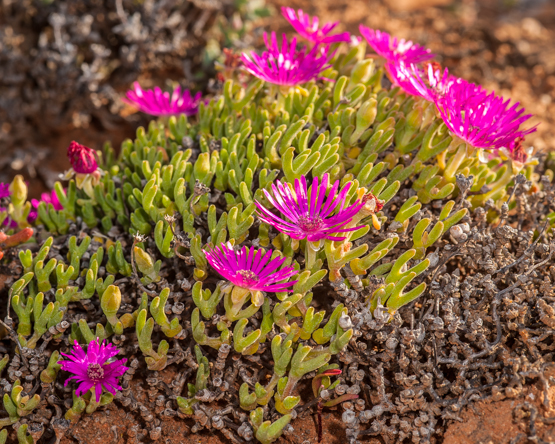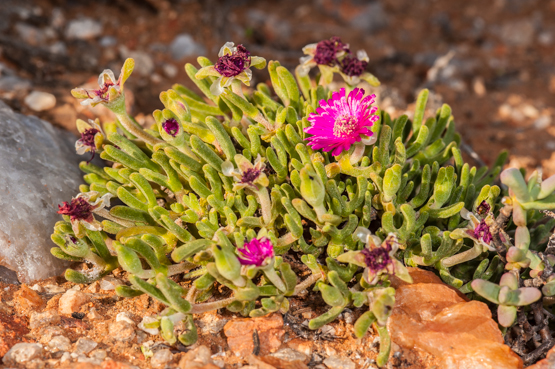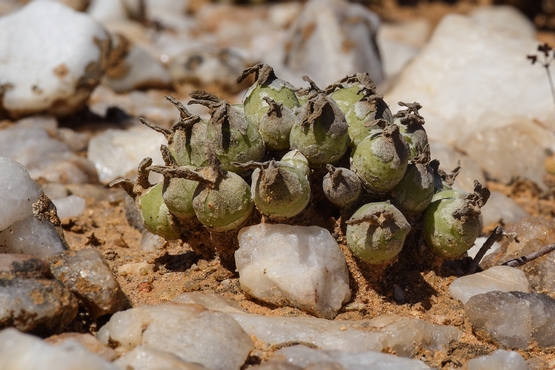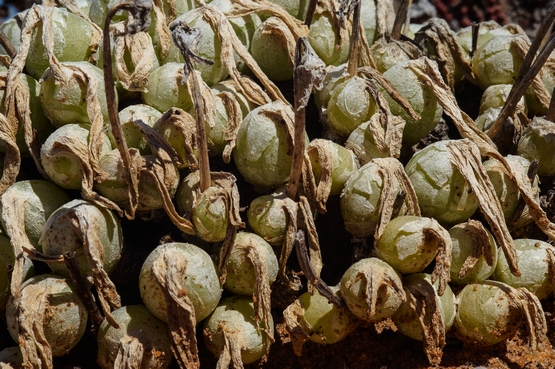These peculiar plants produce leaves of two kinds: the first pairs of the season are egg shaped, forming a bilobed body; the second ones are much longer than wide, with the leaves free for about two thirds of their length.
The plants are cushion-shaped and up to about 30 cm in diameter. They are found from the Richtersveld to southern Namaqualand, in loamy soil, often with quartz pebbles.
The flowers appear in winter and are either dark pink throughout, or rose with a white base, or white (turning pink with age).
The first two pictures were taken 6 Sept. 2010 (look at the Crassula elegans and Conophytum saxetanum keeping the first plant company)
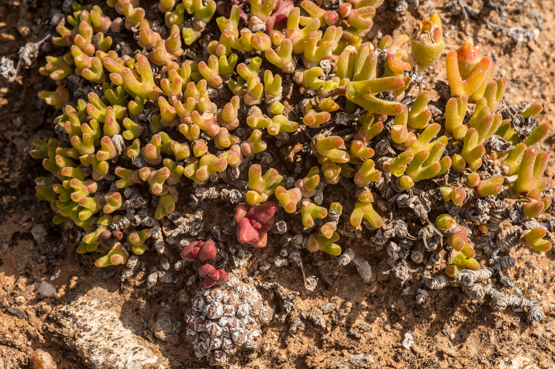
The flowering plants were photographed 11 July 2011

